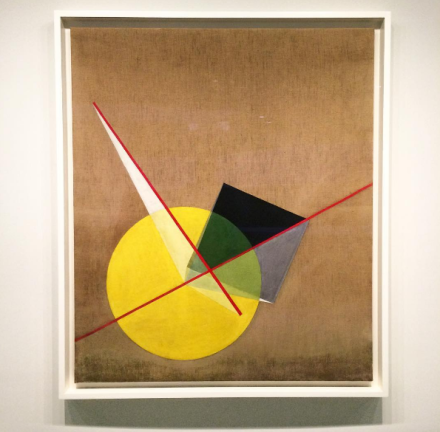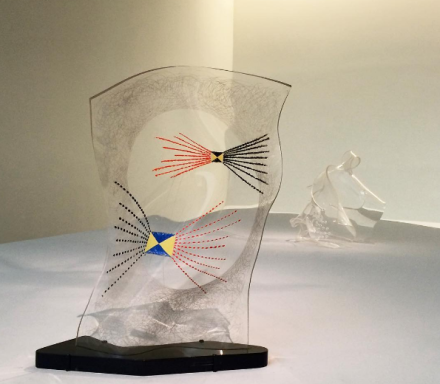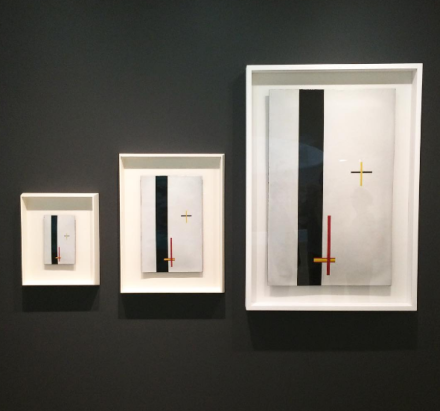
Laszlo Moholy-Nagy, 19 (1921), via Art Observed
The Guggenheim Museum has opened its doors on an expansive exhibition of work by Laszlo Moholy-Nagy, exploring the Bauhaus member’s impressive contributions to the development of 20th Century Modernism. Combining his explorations in sculpture, painting, film, photography and even installation, the exhibition places the artist’s enthusiasm for technological progress into conversation with the present day.

Laszlo Moholy-Nagy, Yellow Circle and Black Square (1921), via Art Observed
Moholy-Nagy’s contributions to the history of the European avant-garde are immense, and the exhibition chooses to focus expressly on the communities and social spheres in which the artist worked. His paintings and compositions made while working in close collaboration with Walter Gropius and his fellow Bauhaus members is juxtaposed not merely with Moholy-Nagy’s work as a painter, but simultaneously with his frequent contributions to socialist art journals, magazines and other journals, underscoring the socially-centered politics that drove so much of his work. Several floors up, this early engagement with the capacities for social progress through innovation is echoed in a series of posters created for the London Underground, glorifying recent developments in its service.

Laszlo Moholy-Nagy, Future Present (Installation View), via Art Observed
This engagement serves as a strong point of conversation when considered in conjunction with his paintings. The future is always just breaking the horizon in Moholy-Nagy’s work, and the enthusiasm for its coming benefits is unavoidable. Yet Moholy-Nagy equally understands that this optimistic tone is best applied not towards plain figuration, but through a new logic of construction. Delicate arrangements of elementary forms that incorporate the hard geometric lines and gradual curves of modernist architecture contend with the urban grid, always exuding an energy that praises human progress while remaining concretely in the abstract. It is only in the artist’s later works that more express depictions begin to appear, as the artist equally begins to experiment with the painted form as a series of manufactured parts.

Laszlo Moholy-Nagy, CH 14 B (1938), via Art Observed
The artist’s interest in the capacity for technology as a generative aspect of his own craft finds its most resonant application in his plexiglass compositions, utilizing the ultra-light material as a compositional element or painterly surface in a range of applications. In some, the material is used as a layering device, adding multiple levels to the painting, each bearing their own logic of marks and lines. Similarly, a series of sculptures near the top of the show see Moholy-Nagy twisting the synthetic plastic into jagged, uneven forms, and then bending their application back towards the art object, adorning their surface with cross-hatched etchings and slender lines of paint that recall his previous work, broken free from the canvas and allowed to hang in an almost empty suspension. A hanging mobile nearby takes this concept even further, as the light passing through its acrylic elements serves as a compositional element of its own, even as it casts reflections out into the space around it.

A series of Moholy-Nagy’s Enamel Paintings on Steel Panels, via Art Observed
It is this gradual move towards the future, the adoption and application of the artist’s early constructivist interests towards the elements of his practice, that make the exhibition so striking, and in the context of the 21st Century, so particularly timely. For an artist whose work consistently sought to write itself over and through the elements of his changing surroundings and culture, Moholy-Nagy’s work feels right at home in the present day.
— D. Creahan
Read more:
Moholy-Nagy: “Future Present” [Guggenheim Museum]



